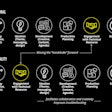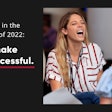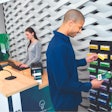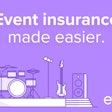Social networking apps are having a profound impact on face-to-face business events. The products help attendees, exhibitors, and sponsors find others with like interests or skills, make it easier to set up meetings, and ultimately add value to the event experience. Here’s a look at four of the newest options suitable for corporate and nonprofit gatherings.
Bizzabo
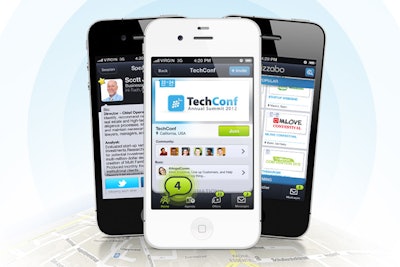
Bizzabo launched in June, making it one of the newest products in this arena. Co-founder Alon Alroy said Bizzabo is intended to become “the standard app for networking at events” because it aggregates information from multiple events on one mobile platform, available for free on iOS and Android. Planners add an event to the app by inputting the event’s name, address, date, hashtag, and description on the Bizzabo Web site, free of charge (they can also import information from Eventbrite). Once added, anyone using the app can find the event, unless the planner opts to make it a private community. Attendees join by connecting their LinkedIn account, and they can also connect their Twitter account and add other professional information. Then users can browse the list of attendees to find people with common interests, send messages in real time, and find future events that like-minded people will be attending.
Planners can also use the app to communicate with attendees and get real-time analytics on usage, while exhibitors can send Groupon-style offers through Bizzabo, such as providing a gift to the first 20 people who click on an offer in the app. Alroy said in the future planners will be able to use the platform to generate revenue from sponsors and exhibitors by providing them with more targeted leads.
Planners can also use the app to communicate with attendees and get real-time analytics on usage, while exhibitors can send Groupon-style offers through Bizzabo, such as providing a gift to the first 20 people who click on an offer in the app. Alroy said in the future planners will be able to use the platform to generate revenue from sponsors and exhibitors by providing them with more targeted leads.
Photo: Courtesy of Bizzabo
Shhmooze
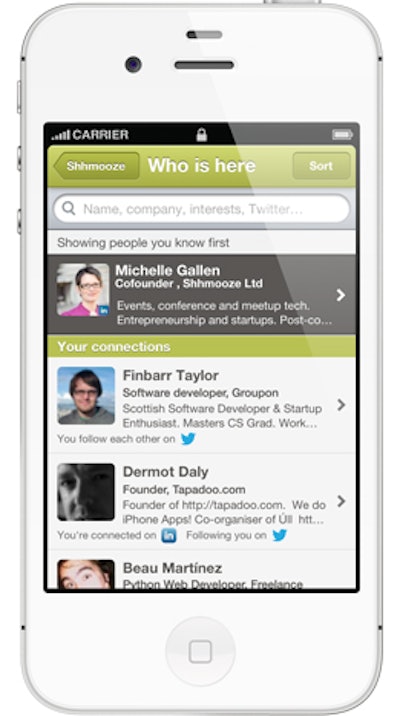
Shhmooze does not require buy-in from the planner or company organizing an event. "We designed this around the needs of the attendee more than the organizer," said Michelle Gallen, co-founder of Shhmooze. An attendee can download the free app (currently only available for iOS, but coming soon for Android) and create a profile by linking to LinkedIn, Twitter, Foursquare, and Meetup accounts. That profile can be used for any event the user attends. Shhmooze is integrated with Meetup and Eventbrite, so events from those platforms are automatically listed. Shhmooze tells the user which of their connections are also at the event, and also suggests new connections by analyzing Foursquare check-ins, tweets with the event hashtag, LinkedIn profiles, and other social network activity, even from people not using the Shhmooze app. Users can search for people by skill or company name to identify attendees who meet their needs or interests.
Gallen said they are working on an algorithm that will provide what it calls “smart recommendations” of whom to meet based on the user’s social graph and interests. Shhmooze will also add tools to allow planners to add schedules, speaker profiles, logos, and other elements, possibly for a fee.
Gallen said they are working on an algorithm that will provide what it calls “smart recommendations” of whom to meet based on the user’s social graph and interests. Shhmooze will also add tools to allow planners to add schedules, speaker profiles, logos, and other elements, possibly for a fee.
Photo: Courtesy of Shhmooze
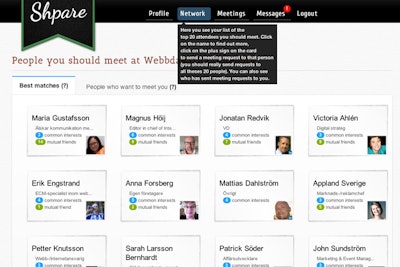
Shpare adds an extra layer of networking assistance by offering a personalized list of the 20 people each attendee should meet at an event. The process begins when the planner imports attendee information into the online system. Shpare then pulls public information from each person’s Twitter, LinkedIn, and Facebook accounts to create a profile for each attendee. A few days before the event, each attendee receives an email explaining the service and inviting them to edit their profile—for example, by adding keywords of specific products or services they are interested in. The system analyzes tweets going back three months prior to the event, as well as likes on Facebook and LinkedIn information (including prior work experience) to generate a list of the 20 best matches. The system does not share personal contact information; instead, attendees click on the “matches” they want to meet, and the system sends a meeting request to that person.Shpare is intended primarily for events with exhibitors and sponsors, who each pay a fee (typically 10 percent of their booth cost) to receive leads generated by the system. That revenue is shared by the planner and Shpare. The matching between attendees is included free of charge as long there are a minimum number of exhibitors and sponsors participating.
Photo: Courtesy of Shpare
Presdo Match
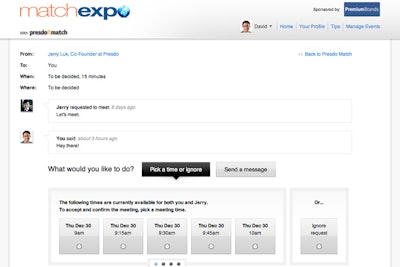
Presdo Match creates an invitation-only social network for an event. Organizers pay for the service based on the number of attendees; rates start at $1,499 for events with as many as 300 people. The system creates profiles on attendees, exhibitors, and sponsors using data from the event registration profile and LinkedIn. “A couple months prior to the event, the network is launched and the attendees have a chance to interact with people before they get there,” said Presdo C.E.O. Eric Ly. Users receive recommendations on other attendees with matching interests, and they can use the network to communicate and schedule meetings.
Attendees can also share the event through social networks, creating “attendee marketing,” said Ly. Planners can use the network to display session information and share speakers’ LinkedIn profiles, and they also receive reports on confirmed and requested meetings. The network is accessible as a Web site and mobile application, and planners can customize it with the event name, logo, and color scheme.
Attendees can also share the event through social networks, creating “attendee marketing,” said Ly. Planners can use the network to display session information and share speakers’ LinkedIn profiles, and they also receive reports on confirmed and requested meetings. The network is accessible as a Web site and mobile application, and planners can customize it with the event name, logo, and color scheme.
Photo: Courtesy of Presdo









